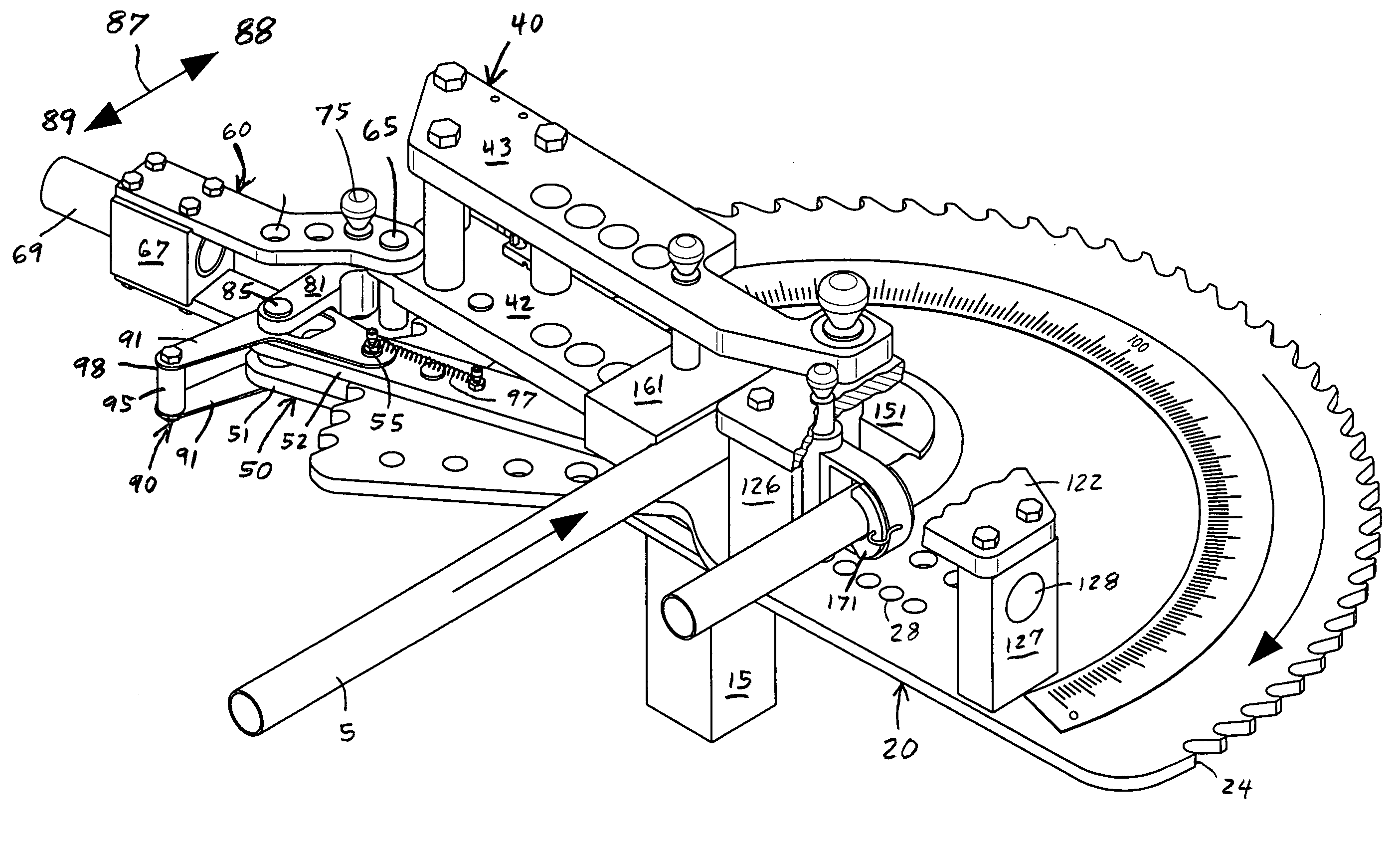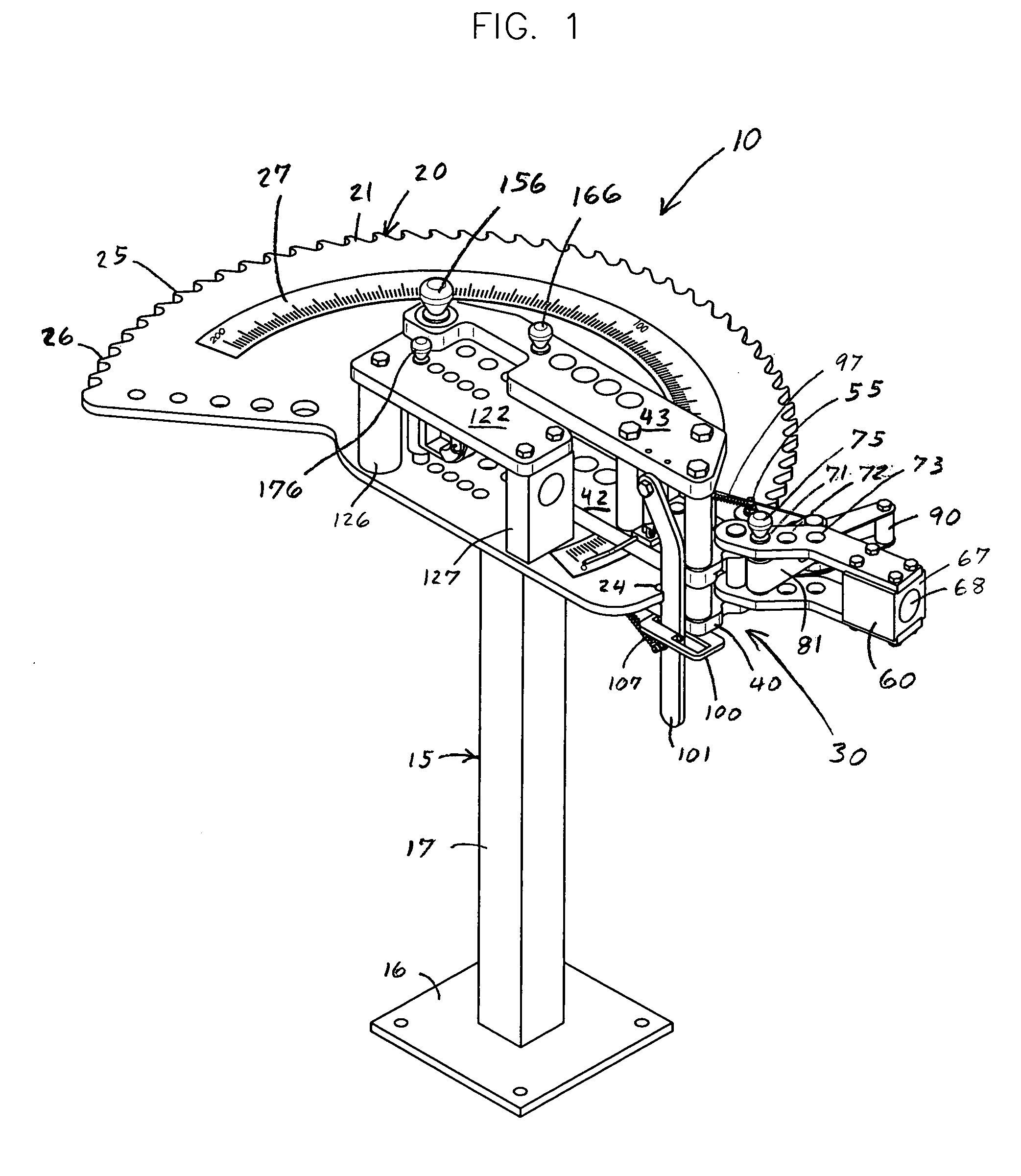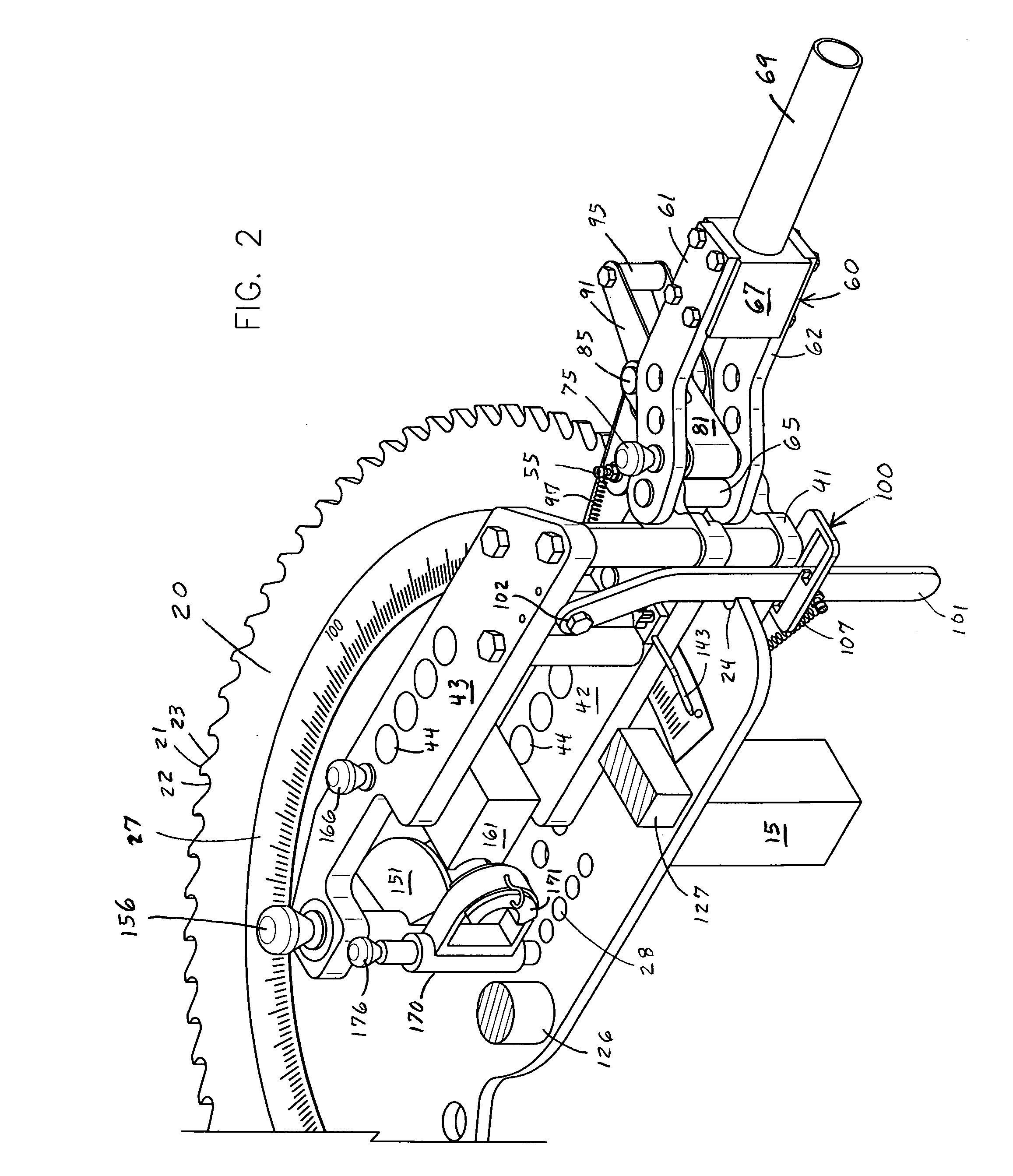Tube bending machine
a tube bending machine and man-operated technology, applied in the field of man-operated tube bending machines, can solve the problems of not having a large amount of floor space, not having a large amount of unobstructed space, and not having a continuous bend of about 30°,
- Summary
- Abstract
- Description
- Claims
- Application Information
AI Technical Summary
Benefits of technology
Problems solved by technology
Method used
Image
Examples
Embodiment Construction
While this invention is susceptible of embodiment in many different forms, the drawings show and the specification describes in detail a preferred embodiment of the invention. It should be understood that the drawings and specification are to be considered an exemplification of the principles of the invention. They are not intended to limit the broad aspects of the invention to the embodiment illustrated.
The present invention generally relates to a manually operated tube bending machine generally shown by reference number 10. The tube bending machine 10 is mounted on a stationary pedestal 15. The pedestal includes an anchor plate 16 that is firmly secured by bolts or otherwise to the floor of a building, or some other fixed structure. An integral riser 17 extends upwardly from the anchor plate 16. The riser 17 supports a stationary upper mounting plate 18. The mounting plate 18 forms a generally horizontal surface for mounting the working components of the tube bending machine 10 at...
PUM
| Property | Measurement | Unit |
|---|---|---|
| Length | aaaaa | aaaaa |
| Speed | aaaaa | aaaaa |
| Shape | aaaaa | aaaaa |
Abstract
Description
Claims
Application Information
 Login to View More
Login to View More - R&D
- Intellectual Property
- Life Sciences
- Materials
- Tech Scout
- Unparalleled Data Quality
- Higher Quality Content
- 60% Fewer Hallucinations
Browse by: Latest US Patents, China's latest patents, Technical Efficacy Thesaurus, Application Domain, Technology Topic, Popular Technical Reports.
© 2025 PatSnap. All rights reserved.Legal|Privacy policy|Modern Slavery Act Transparency Statement|Sitemap|About US| Contact US: help@patsnap.com



